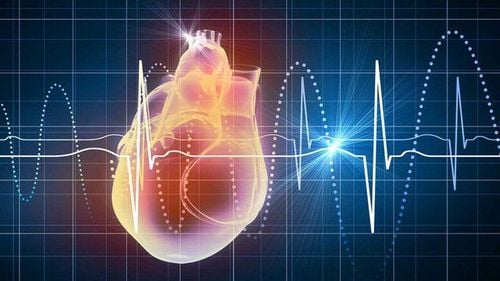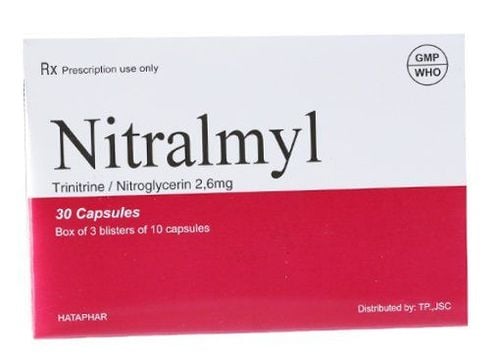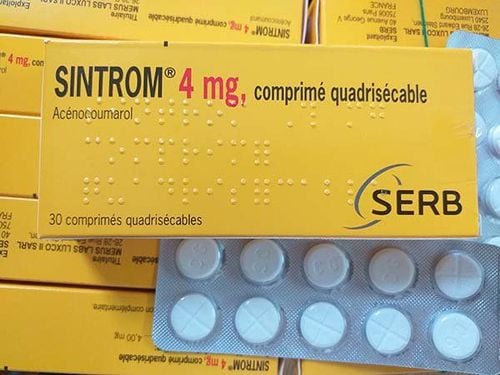This is an automatically translated article.
The article is professionally consulted by Doctor Nguyen Van Duong - Cardiovascular Center - Vinmec Central Park International General Hospital.
Atrial fibrillation is the most common heart rhythm disorder in the world and increases the risk of stroke by 5 times. Therefore, patients with atrial fibrillation should not be subjective and should follow the advice and treatment of cardiologists.
1. What is atrial fibrillation?
When the sinus node loses its pacing role due to the appearance of spontaneous pacing in the two atrial chambers, atrial fibrillation occurs. The reason is called atrial fibrillation because at this time, the observed rhythmic contraction activity is atrial fibrillation, the beats are weak, asynchronous, blood is not circulated to the ventricles enough to feed the body.Atrial fibrillation is the most common supraventricular arrhythmia. In the normal person, the heart's pacing node is the sinus node, located in the right atrium wall at the entrance of the superior vena cava, responsible for generating electrical impulses and conducting them in bundles of fibers to each cell. The heart muscle helps the heart work rhythmically and synchronously. When atrial fibrillation occurs, the sinus node loses its rhythm control function, the atria do not function normally when fluttering with a frequency of about 350-600 beats/min. This condition causes the heart to contract ineffectively, blood flow in the atria is not completely ejected into the ventricles and circulates in the atria, increasing blood clotting and forming small blood clots in the heart. When a blood clot is brought down to the ventricle and is ejected throughout other organs in the body, it will lead to dangerous complications, the most frightening is cerebral vascular occlusion causing stroke or pulmonary embolism causing death. In addition, atrial fibrillation is also considered a cause related to heart failure, fatigue, shortness of breath, palpitations and dizziness of patients.
According to statistics, atrial fibrillation accounts for about 25% of cerebral strokes, corresponding to more than 100,000 cases of cerebral infarction each year. Atrial fibrillation is an abnormality that worsens over time and is unlikely to resolve on its own without proper treatment and monitoring. Arrhythmia in general and atrial fibrillation in particular greatly affect the patient's quality of life, becoming difficult to treat if not detected for a long time. Therefore, if in doubt, patients need to go to reputable medical facilities for examination, diagnosis and long-term treatment plan.
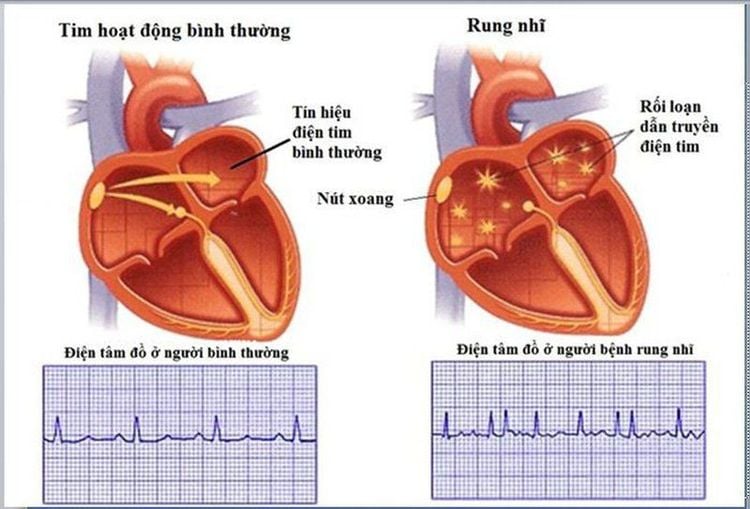
2. Causes and risk factors of atrial fibrillation
Any condition that affects rhythm and impulse conduction can lead to atrial fibrillation. Atrial fibrillation is the most common type of cardiac arrhythmia in clinical practice. The role of the sinus node as a pacifier disappears, and is replaced by the emission of pulses from many points in the two atrial chambers, creating atrial fibrillation. The direct cause of atrial fibrillation is still not fully understood, but many risk factors associated with atrial fibrillation have been listed and discussed.The risk factor is not a direct cause of atrial fibrillation. However, people with the following listed risk factors have a higher risk of developing atrial fibrillation than others, and the likelihood of complications is also of greater concern:
Older adults 60 years old: Statistics show that atrial fibrillation is more common in the elderly population than the young Have high blood pressure Have cardiovascular diseases such as heart failure, heart valve disease, myocardial infarction, ischemia of the heart muscle. Thyroid disease such as hyperthyroidism Pulmonary disease Diabetes surgery Cardiovascular conditions Alcoholism or substance use Infectious diseases Other systemic diseases
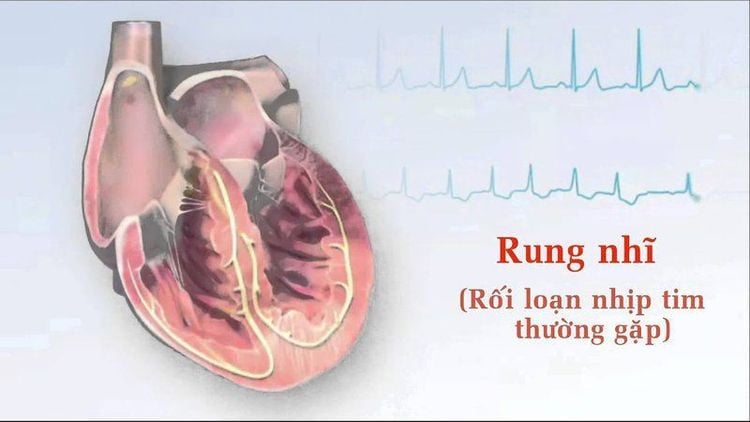
3. Clinical signs of atrial fibrillation
Many patients with arrhythmias do not have any clinical symptoms, including patients with atrial fibrillation. The clinical manifestations of atrial fibrillation are quite diverse, varying depending on age, underlying disease causing atrial fibrillation and its complications.Some common symptoms include:
Feeling dizzy, tired Shortness of breath, feeling short of breath Feeling of palpitations, feeling your heart beating fast and hard in your chest Chest pain or feeling heavy in your chest vague, indistinct The pulse shows a rapid, irregular pulse. To diagnose atrial fibrillation, the physician needs to take the history, clinical symptoms and combine with the laboratory methods. Factors related to history and clinical symptoms are significant and suggestive of an arrhythmia. The electrocardiogram is the first-line tool for the diagnosis of common arrhythmias, including atrial fibrillation.
The most common complication of atrial fibrillation is blood clot formation. Once they are released into the circulation to other organs in the body, dangerous, even life-threatening medical conditions can appear such as a stroke if a blood clot blocks the organs. cerebrovascular accident, myocardial infarction if coronary occlusion, and pulmonary infarction if pulmonary blood vessels are blocked by blood clots. The method of choice for the prevention of thrombosis in patients with atrial fibrillation is oral anticoagulants. Anticoagulants prevent blood clots by acting directly on the coagulation cascade. Anticoagulants must be carefully selected for each patient, weighing the benefits and risks of bleeding when used.
The use of anticoagulants can bring many risks. Patients with atrial fibrillation, once diagnosed, need to follow the treatment plan set out by the doctor. The things that need to be done are to take the medicine regularly every day according to the prescription and have regular check-ups to check the blood clotting function, detect complications in time for a reasonable drug adjustment.
To protect heart health in general and detect early signs of myocardial infarction and stroke, customers can sign up for Cardiovascular Screening Package - Basic Cardiovascular Examination of Vinmec International General Hospital . The examination package helps to detect cardiovascular problems at the earliest through tests and modern imaging methods. The package is for all ages, genders and is especially essential for people with risk factors for cardiovascular disease.
Dr. Nguyen Van Duong has many years of experience in the diagnosis and treatment of internal cardiovascular diseases and cardiovascular interventions; Perform other noninvasive functional investigations in the diagnosis and treatment of cardiovascular diseases. Currently working as a treating doctor at Cardiovascular Center, Vinmec Central Park Hospital since August 2017
Please dial HOTLINE for more information or register for an appointment HERE. Download MyVinmec app to make appointments faster and to manage your bookings easily.






